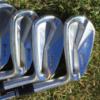Maltby Playability Factor - which irons are easiest to hit
-
Who's Online 67 Members, 0 Anonymous, 1,005 Guests (See full list)
- Steven Senft
- domill
- gkcapers
- Indy_Oz
- 4goossen
- Chubbs1991
- Kevin Smith
- Deemytri
- azstu324
- Richard Wise
- bigmoe18034
- DroppinStrokes
- JAYER38
- wcgalley
- Bucky CC
- Klutzgolfer
- bama no 1
- William P
- Beakbryce
- GolfSpy_BEN
- Shapotomous
- seanadkins21
- ZoonORama
- Steve W
- Lefty11
- jogolfs96
- mardukes
- Siamese Moose
- sl1111
- Austinfeeney
- Dutch Boy
- johngschulz
- Paul Hedrick
- blopoten
- Jake Fairbanks
- Chris Bojo
- GolfSpy_APH
- KCEE
- Bobby Z
- 03trdblack
- revkev
- EEZurg
- Clone7333
- Tom the Golf Nut
- gavinski91
- unccross
- brodonnell17
- GolfSpy AFG
- Northern Monkey
- Dawg061
- Meangusto
- Alan Scalzi
- bmcg303
- Marty2shanks
- Min2Golf
- Syks7
- Helmsy26
- GaDawg
- ILMgolfnut
- ToastedSoul
- DaveP043
- stevegp67
- Mark Robert
- brian gogerty
- dagoodwins
- Michael.Sandoval33
- Bronco


Recommended Posts
Join the conversation
You can post now and register later. If you have an account, sign in now to post with your account.